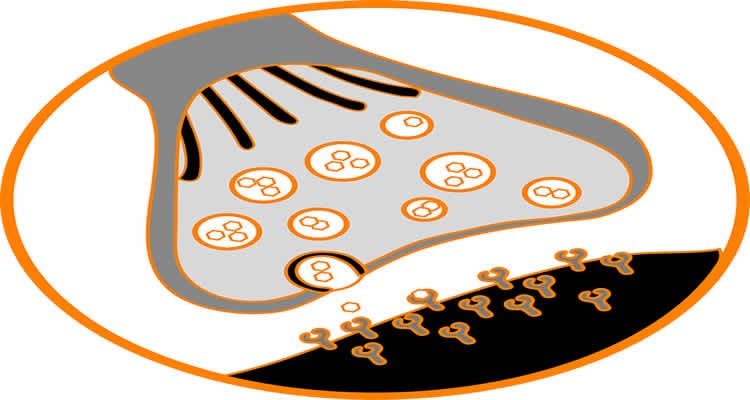A mathematical equation explains how equilibrium is achieved between two forms of synaptic plasticity during brain learning.
When the brain learns, individual synapses change in strength. This phenomenon, known as synaptic plasticity, is driven by two fundamental processes: Hebbian plasticity and homeostatic plasticity. Taro Toyoizumi from the RIKEN Brain Science Institute and colleagues have now developed a mathematical equation of synaptic plasticity that describes the interplay between these two processes.
“Hebbian plasticity is thought to underlie various forms of learning and memory,” explains Toyoizumi. This form of plasticity is characterized by a short timescale—occurring within minutes of an experience—and is specific to a particular set of synapses. In contrast, homeostatic plasticity can be much slower and affect synapses in contact with a post-synaptic cell in a global manner. This plasticity has a scaling effect that brings the neuronal activity within a certain physiological range. “It’s like turning up the brightness on a television,” says Toyoizumi.

University of California neuroscientists Megumi Kaneko and Michael Stryker, co-authors of the present study, previously demonstrated that both types of plasticity operate in an experimental protocol known as ocular dominance plasticity (ODP). In the ODP experiment, young mice have one eye blindfolded during a critical developmental period. This manipulation alters the relative representation of information from both eyes in the visual cortex. Hebbian plasticity weakens the efficacy of the closed eye in driving the visual cortex, whereas homeostatic plasticity strengthens that of the open eye.
Working with mathematician Kenneth Miller from Columbia University, Toyoizumi showed that existing mathematical models of synaptic strength were unable to reproduce the ODP data. “The learning outcome becomes unstable if homeostatic plasticity directly competes with but lags Hebbian plasticity,” he says.
Toyoizumi and Miller developed a new model in which synaptic strength is described as a product of biophysical factors for Hebbian and homeostatic plasticity, with each reaching equilibrium independently as learning proceeds. “Slow homeostatic plasticity can modify synaptic strength without being overwritten by Hebbian plasticity,” says Toyoizumi.
The new model was found to provide a good fit to experimental ODP data. Further, it predicts that when the closed eye in the ODP experiment was reopened, an overshoot will occur in the visual response to that eye, and that the overshoot will not occur if homeostatic plasticity was chemically blocked. Collaborating with Kaneko and Stryker on ODP experiments, the team experimentally confirmed both predictions.
“Understanding the law of plasticity is important,” says Toyoizumi. “We’ve shown that the interaction of two biophysical factors, Hebbian and homeostatic plasticity, is critical for the stability of learning outcome.”
Contact: Taro Toyoizumi – RIKEN
Source: RIKEN press release
Image Source: The image is credited to Nemo and is for illustrative purposes only
Original Research: Abstract for “Modeling the Dynamic Interaction of Hebbian and Homeostatic Plasticity” by Taro Toyoizumi, Megumi Kaneko, Michael P. Stryker, and Kenneth D. Miller in Neuron. Published online October 22 2014 doi:10.1016/j.neuron.2014.09.036






